Do Garbage Work: Addressing Food Waste on Gettysburg College Campus
By Kiki Wallick and Kenzie Smith | November 4, 2019
The issue of food waste among individuals on Gettysburg College campus is both an environmental crisis as well as an economic problem. Nationally, the United States wastes $218 billion worth of food annually— this translates to every American wasting half their average daily caloric intake. Knowing the extent of this global problem, Gettysburg Dining Services has already taken steps to reduce food waste on our campus. But the issue still persists, and it seems that the main reason for this is us, the students.
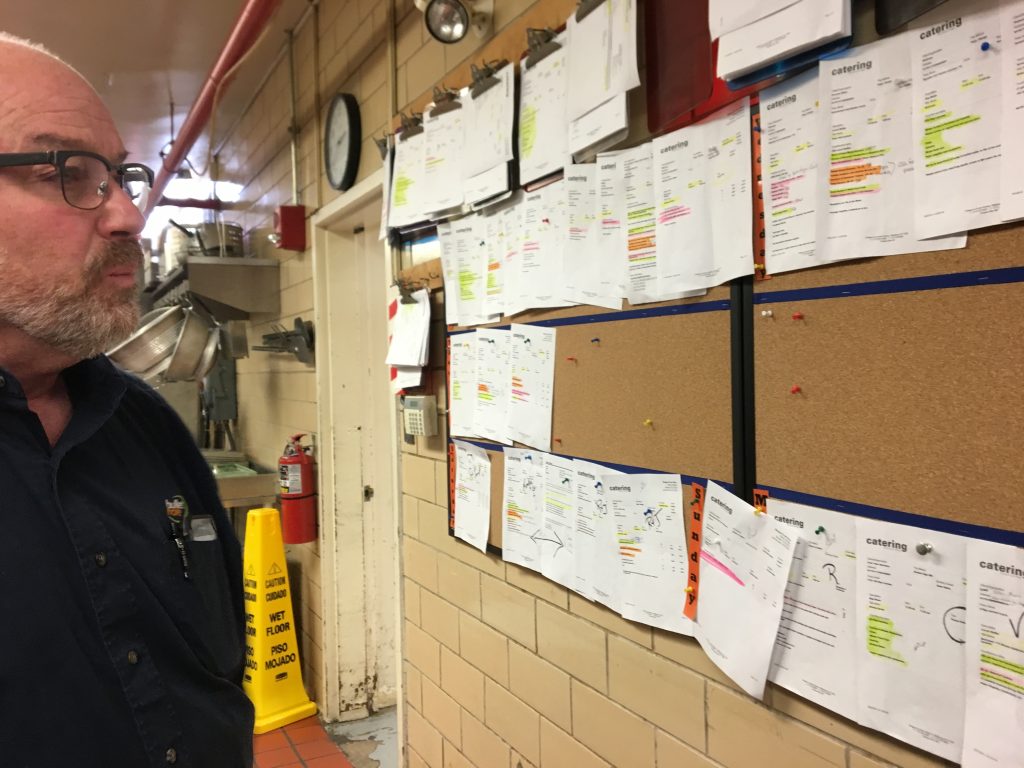
Photo credit: Kenzie Smith
Servo, Gettysburg College’s main dining facility, works extensively to combat their part in the issue of food waste, first focusing on reducing waste in production. Much of the produce they buy is pre-trimmed and pre-washed to reduce in-kitchen waste. Additionally, both the purchasing of ingredients and the preparation of meals are mathematically estimated based on previous response and predicted number of customers, to ensure the optimal number of servings are being prepared. In instances of excess food, Servo donates edible leftovers to CPS Campus Kitchen twice a week.
Any scraps that cannot be salvaged, along with all post-consumer waste from the dish return, go into a pulper which reduces the volume of the waste by 80%. Every week, 1200-1400 pounds of that pulp gets cooked in an ecovim composter to produce sterile ground amendment for Gettysburg Facilities to use on their compost.
With all the efforts the Dining facilities have made, it seems the main issues of food waste lie outside the kitchen.
“For most of us our eyes are bigger than our stomaches,” Gary Brautigam, director of Dining Services at Gettysburg College, states while standing in the back of Servo Dining Center speaking over the cacophonies of a busy kitchen. “Having our customers reduce their waste is the toughest thing” (Brautigam, personal communication, October 2019).
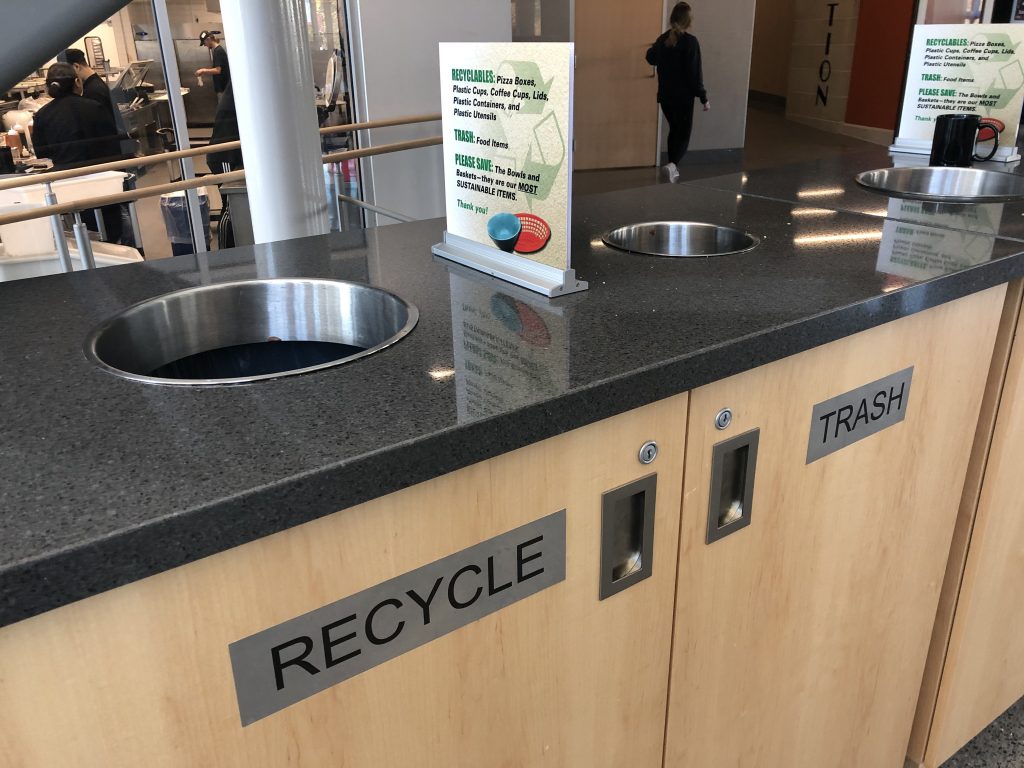
Trash and Recyling receptacles at Bullet Hole dining center 
Recycling guide at receptacles
In an effort to reduce post-consumer waste, Servo dining facility has implemented portion control measures. “Controlling the portions on our end is one of the first steps to reducing food waste,” Brautigam states about Servo’s one portion per trip policy (Brautigam, personal communication, October 2019). Studies have also shown that the removal of trays from dining facilities can help to reduce food waste [(Alexander 2015), (Pittman 2012)]; this is certainly the case with Servo’s decision to remove trays four years ago.
Despite Servo’s best efforts, consumers remain the main contributors to food waste on campus— specifically students. Studies conducted at comparable universities have shown that students waste more than faculty and staff (Ozcicek-Dolekoglu and Var 2019), and this seems to be the case for Gettysburg as well. As a senior at Gettysburg College, Clare Boelhouwer has witnessed four years of food wasting perpetrated by students in campus dining facilities. “People take more than they can eat, and sometimes waste full plates of food” (Boelhouwer, personal communication, October 2019). Another student expresses the same sentiment, commenting that “people gather a thousand meals and eat just one” (Maynard, personal communication, October 2019).
I think it’s a community issue. The school is doing all they can do at the time.
Clare Boelhouwer
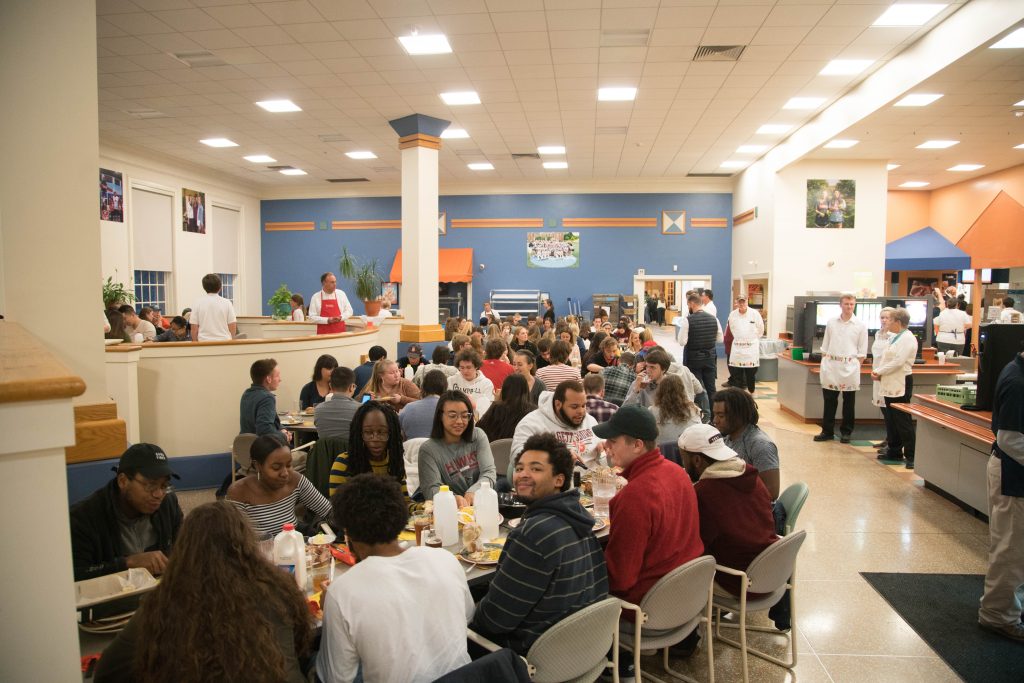
One way to encourage students to reduce their food waste is raising awareness of the issue through messaging. One Kansas State University study has shown that the presence of informative signs with simple messages such as Don’t Waste Food in dining facilities helped to reduce the volume of food waste by 15% (Whitehair et. al. 2013). Boelhouwer agrees that this is the solution: “I think it’s a community issue. The school is doing all they can do at the time. But I think the solution is just raising awareness” (Boelhouwer, personal communication, October 2019).
Another possible solution is to invite students to take advantage of composting resources on campus. Currently, the Painted Turtle Farm (PTF), located on the outskirts of campus behind the Jaeger Fitness Center, serves as one of the few accessible composting resources for the campus community. The farm boasts a meager 3/4 of an acre with seasonal rotating crops like tomatoes, potatoes, a variety of beans, and herbs like basil. Fiji, the farm’s spirited tortoise, ambles around the property saying hello to the visiting honey bees and ladybugs. Jeff Rioux, PTF’s administrative advisor, has not seen much student engagement with the farm’s composting; instead, he has experienced more interaction with the local Gettysburg community: “we do have some local [input]. We have some families in the area that know about our compost and will bring their stuff here, which is nice” (Rioux, personal communication, October 2019).
It is possible that student compost involvement is meager due to PTF’s inconvenient location. One way to address this would be by providing composting resources at more locations around campus.
I think the biggest problem is at Bullet… implementing composting would be best
Mckenzie Somers
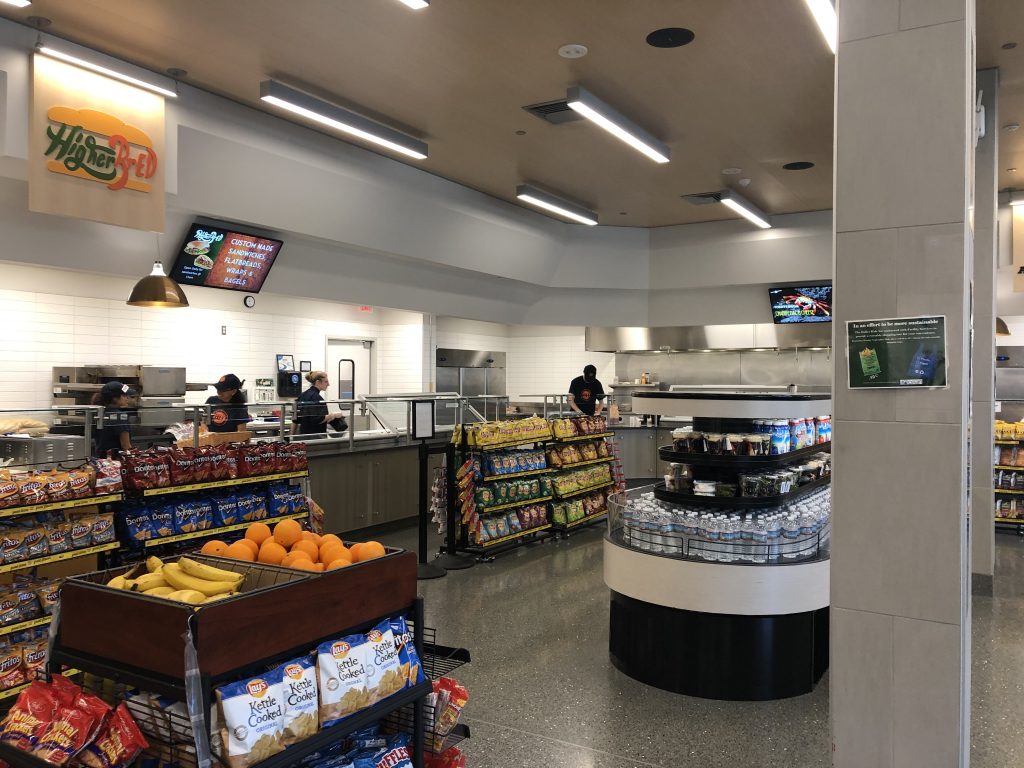
Photo Credit: Kiki Wallick
“I think the biggest problem is at Bullet,” says Gettysburg senior, McKenzie Somers. “Yes, you can take your food home with you, but many people aren’t going to. I think that implementing composting would be best. It’s also really easy to have a poster with pictures of what can and cannot be composted. Once students get used to composting in the dining facilities, then it could potentially be implemented in college housing” (Somers, personal communication, October 2019).
Gettysburg College students must take the initiative to reduce food waste. While there are still more solutions the college can implement to cut down on the amount of food wasted, the solution is rooted in the actions of the student body.
The issue of food waste on our campus is representative of food waste on a national scale. According to the Natural Resources Defense Council (NRDC), “America does not eat 40% of its food. If the United States went grocery shopping, we would leave the store with five bags and drop two in the parking lot. And leave them there” (Berkenkamp et al 2017). The NRDC reports that 21% of the US landfill content is food, making it the number one contributor by weight (Gunders et al 2017).
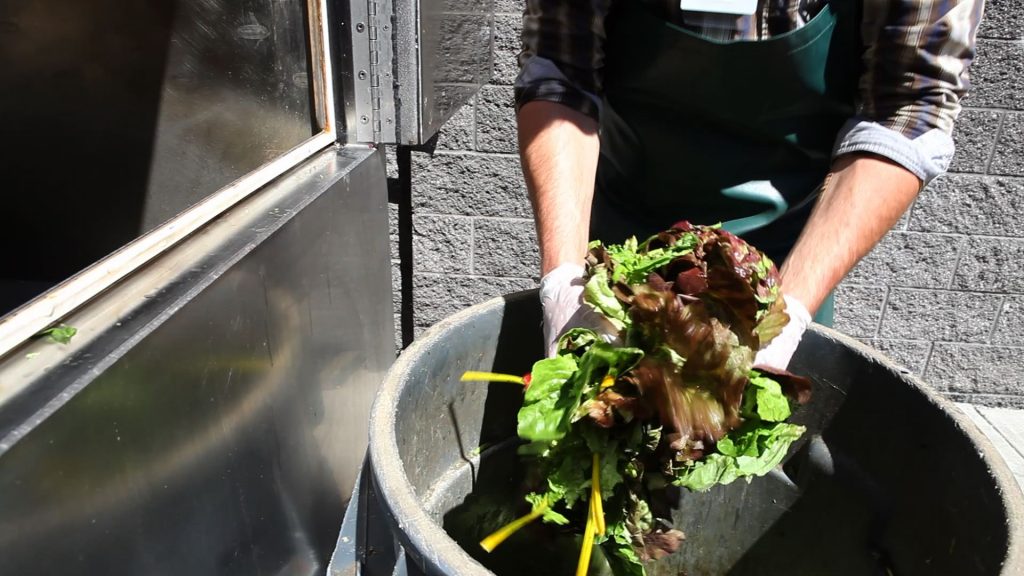
Americans waste food for a plethora of reasons including: past expiration date, forgotten leftovers, and appearance issues. We are a country of picky eaters. If food is a day past its expiration date, it is spoiled. If our gala apple has a brown spot, it is inedible.
Audrey Maynard, a Gettysburg College student, puts it best: the crux of the issue is that, in America, “it’s not a big deal to throw away food” (Maynard, personal communications, October 2019).
Sources
Alexander, A. Dec. 15, 2014. Cafeteria Trays Dropped from Dining Halls at Rutgers to Reduce Waste. Rutgers Today. <https://news.rutgers.edu/feature/cafeteria-trays-dropped-dining-halls-rutgers-reduce-waste/20141214#.XZqghEZKg2x>
Berkenkamp, J., D. Hoover, and Y. Mugica. 2017. Food matters: what food we waste and how we can expand the amount of food we rescue. Issue brief, Natural Resources Defense Council, Washington D.C., USA.
Boelhouwer, C. October 24, 2019. In-person interview by Kenzie Smith.
Brautigam, G. October 25, 2019. In-person interview by Kenzie Smith.
Gunders, D., J. Bloom, J. Berkenkamp, D. Hoover, A. Spacht, and M. Mourad. 2017. Wasted: how America is losing up to 40 percent of its food from farm to fork to landfill. Report, Natural Resources Defense Council, Washington D.C., USA.
Ozcicek-Dolekoglu, C.,and I. Var. 2019. Analysis of Food Waste in University Dining Halls: A Case Study From Turkey. Fresenius Environmental Bulletin 28(1), p156-166. <http://ezpro.cc.gettysburg.edu:2048/login?url=http://search.ebscohost.com/login.aspxdirect=true&db=eih&AN=134948720&site=ehost-live&scope=site>
Pittman, G. Nov. 2012. Removing trays from dining halls cuts food waste. Reuters. <https://www.reuters.com/article/us-removingtrays-dininghalls/removing-trays-from-dining-halls-cuts-food-waste-idUSBRE8A114T20121102>
Maynard, A. October 27, 2019. In-person interview by Kiki Wallick.
Rioux, J. October 28, 2019. In-person interview by Kiki Wallick.
Somers, M. October 29, 2019. In-person interview by Kenzie Smith.
Whitehair, K., C. W. Shanklin, L. A. Brannon. Jan 2013. Written Messages Improve Edible Food Waste Behaviors in a University Dining Facility. Journal of the Academy of Nutrition & Dietetics 113 (1), p63-69. <http://ezpro.cc.gettysburg.edu:2048/loginurl=http://search.ebscohost.com/login.aspx?direct=true&db=eih&AN=84478390&site=ehost-live&scope=site>